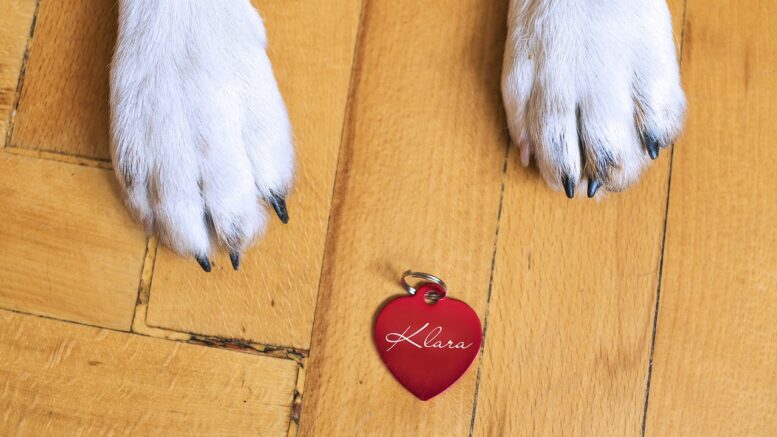di Sergio Mauri
Introduction: Pets are cherished members of our families, and their safety is of paramount importance. Pet identification plays a crucial role in ensuring their well-being by increasing the chances of a lost pet being reunited with its owner. Additionally, implementing safety measures can help prevent accidents, injuries, and potential hazards. In this article, we will delve into the significance of pet identification and explore various safety measures that pet owners can implement to safeguard their furry companions.
- Microchipping: A Lifesaver for Lost Pets: Microchipping is a safe and effective method of permanent identification for pets. A tiny microchip, roughly the size of a grain of rice, is implanted beneath the pet’s skin. This chip contains a unique identification number linked to the owner’s contact information. If a lost pet is found, veterinary clinics, shelters, or animal control facilities can scan the chip, enabling a swift reunion with their worried owners. It is crucial to ensure that the microchip is registered and the contact information is kept up to date.
- Collars and ID Tags: Visible Identification: Collars with ID tags remain one of the most visible forms of identification for pets. These tags typically include the pet’s name and the owner’s contact information. It is essential to ensure that the information is clear, up to date, and legible. ID tags are particularly useful in case a pet is found by someone who may not have access to a microchip scanner. Regularly check the collar’s fit to prevent accidental slips or the collar becoming too tight.
- GPS Tracking Devices: Real-Time Location Monitoring: GPS tracking devices have become increasingly popular for pet owners who want real-time location monitoring. These devices can be attached to the pet’s collar or integrated into specialized collars. Using smartphone applications or dedicated platforms, owners can track their pet’s whereabouts, set virtual boundaries, and receive alerts if the pet goes beyond those boundaries. GPS tracking devices provide an added layer of security, especially for pets with a tendency to wander or in unfamiliar environments.
- Secure Fencing and Enclosures: Creating a safe and secure environment for pets is crucial to their well-being. Installing appropriate fencing around the property helps prevent accidental escapes or encounters with potentially dangerous situations such as traffic. Fences should be sturdy, without any gaps or holes that allow pets to squeeze through. Additionally, for pet owners with smaller animals or specific needs, enclosed outdoor play areas or catteries can provide a safe and controlled space for pets to enjoy the outdoors.
- Awareness of Potential Hazards: Pet owners should be aware of potential hazards within and outside the home. Common hazards include toxic plants, chemicals, electrical cords, open windows, and swimming pools. Regularly inspecting the living space for potential dangers and taking necessary precautions helps prevent accidents and injuries. It is also important to be cautious during walks or visits to unfamiliar locations, ensuring pets are kept on a leash or harness and are supervised at all times.
- Emergency Preparedness: Having a well-thought-out emergency plan is crucial for pet owners. In the event of natural disasters or emergencies, such as fires or evacuation situations, having a pet emergency kit, including food, water, medication, and identification documents, is essential. Identifying pet-friendly shelters or accommodations in advance can help ensure the safety and well-being of pets during such challenging situations.
Conclusion: Pet identification and safety measures are vital for the well-being and peace of mind of both pets and their owners. Implementing permanent identification methods such as microchipping, visible identification through collars and ID tags, and GPS tracking devices significantly increase the chances of a lost pet being reunited with its owner. Creating a secure environment, being aware of potential hazards, and having an emergency preparedness plan are equally important to prevent accidents and ensure the safety of our furry companions. By taking proactive measures and staying vigilant, we can provide a secure and nurturing environment for our pets.
Remember, pet identification and safety should be an ongoing commitment. Regularly check your pet’s identification tags for readability and accuracy. Keep the contact information associated with microchips up to date, especially if you change your address or phone number. Additionally, periodically review and update your emergency preparedness plan to account for any changes in your pet’s needs or circumstances.
By prioritizing pet identification and safety, we can protect our beloved companions and provide them with the care they deserve. These measures not only help prevent loss or accidents but also provide peace of mind, knowing that we have taken proactive steps to ensure the well-being of our furry family members. Let’s make pet identification and safety a top priority and create a world where our pets can thrive in a secure and loving environment.


